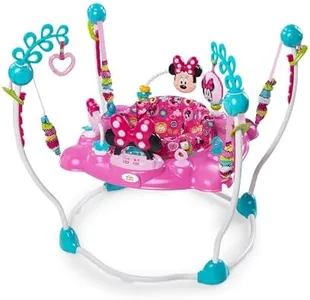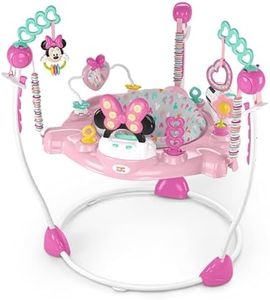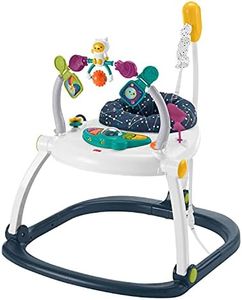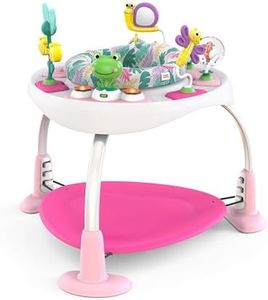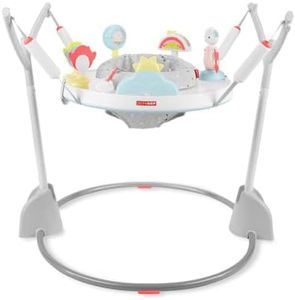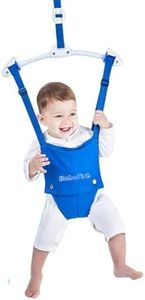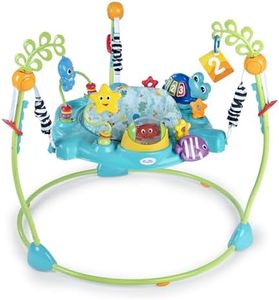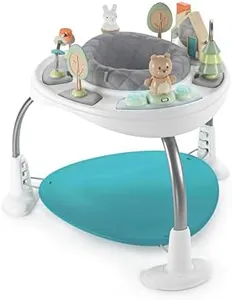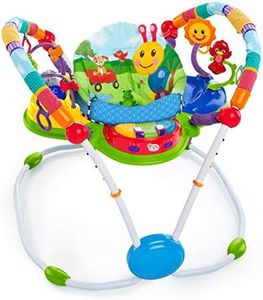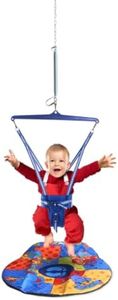We Use CookiesWe use cookies to enhance the security, performance,
functionality and for analytical and promotional activities. By continuing to browse this site you
are agreeing to our privacy policy
10 Best Baby Jumpers
From leading brands and best sellers available on the web.By clicking on a link to a third party's website, log data is shared with that third party.
Buying Guide for the Best Baby Jumpers
Choosing a baby jumper involves making sure it is both safe and suitable for your baby’s developmental stage, while also fitting well within your living space. Since babies use jumpers to build strength and coordination, picking the right one can help support their growth and keep them entertained. As you consider your options, think about your baby’s age, size, and activity level, as well as the available space in your home and how easy the jumper is to use and clean.Weight and Age LimitsThe weight and age limits are manufacturer guidelines that indicate the range for which the jumper is safe and effective. These limits are crucial for your child’s safety because using a jumper outside of the recommended range can be dangerous and may not provide the right support. Weight limits usually fall between 15-25 pounds, and age recommendations often start around 4 months, when many babies can hold their heads up well. If your baby is on the smaller or larger side, pay special attention to these ranges. Always pick a jumper that matches your baby’s current size and stage—never buy for 'room to grow,' as proper fit is essential for safety.
Type: Stationary vs. DoorwayThere are two main types of baby jumpers: stationary and doorway. Stationary jumpers sit on the floor with a frame, while doorway jumpers attach to a doorframe and hang in the opening. Stationary models tend to be more stable, can include extra play features, and are a good fit if you don't want to rely on always having the right kind of doorway. Doorway jumpers save space and are more portable, but require very secure doorframes and constant supervision. Think about your home layout, how portable you need the jumper to be, and where you’ll use it most when choosing between these types.
Seat Support and AdjustabilityThe seat is where your baby sits, so support and adjustability are important for comfort and safety. A supportive seat will cradle your baby and help them stay upright, while adjustable heights allow the jumper to 'grow' with your child and accommodate different leg lengths so their feet touch the floor appropriately. Look for models with padded, snug seats and several height adjustment options. If your baby is on the taller or shorter side, adjustability is especially useful, letting you customize the jumper for the best fit as they develop.
Safety FeaturesSafety features include things like sturdy frames, non-slip bases, secure straps, and locking mechanisms. These help prevent falls, tipping, or accidental dislodging during use. A jumper with a wide base is less likely to tip over, and straps or harnesses should be strong and comfortable. Always check for any exposed springs or gaps where little fingers could get pinched. When choosing a jumper, prioritize models with clear safety certifications and features that match your home setup and activity level of your baby.
Entertainment and ToysMany jumpers come with built-in toys, lights, sounds, or music to engage your baby while they jump. These features can provide sensory stimulation and encourage longer, more enjoyable playtime, helping with visual and motor skill development. However, some babies prefer simpler setups. Consider your baby’s interest in toys and how much noise or stimulation you want in your living space before picking a jumper with lots of bells and whistles. If the toy tray is removable or customizable, that's a bonus for keeping things fresh as your child grows.
Portability and StoragePortability and storage determine how easy it is to move or put away your jumper. If you have limited space, look for a model that folds flat or has a compact frame. If you want to take the jumper to another room or a grandparent's house, lighter and more portable options are helpful. Think about how often you’ll need to set up or store the jumper and how much space you can dedicate to it when it’s not in use.
Ease of CleaningBabies can be messy, so the ability to easily clean the jumper is key. Many options have removable, machine-washable seat covers, while others may just wipe down. Consider how likely your baby is to have spills or diaper mishaps and look for a jumper with materials and covers that are easy to wash and reassemble.
